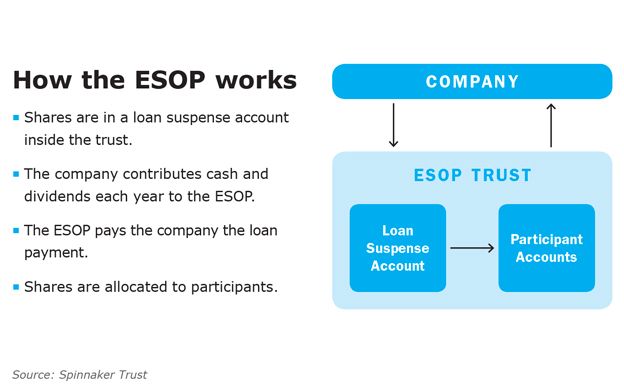So you’ve set up your ESOP. Now what?

Day 1 after the transition from a private or public company into an Employee Stock Ownership Plan, a company may not seem any different as far as day-to-day operations are concerned, but in the background, it isn't business as usual.
It can take some time for employees and management to wrap their heads around the fact that they now own the company, which typically means they have a large loan to pay, and that the stock that will be issued to employees is actually a retirement plan that has to be legally run as one. Because there's not a third party involved, it doesn't seem to many employees like the company actually has been sold.
ESOPs have become popular business exit strategies with tax benefits and the assurance the company will continue. As of 2015, the National Center for Employee Ownership estimates there are roughly 7,000 ESOPs nationwide covering about 13.5 million employees.
That means it's important for management to assure the benefits being sought under an ESOP are actually realized, according to Jeannine Pendergast, vice president and senior ESOP client advisor at Spinnaker Trust, a Portland-based Maine bank chartered as a non-depository trust company.
Pendergast notes that many times businesses that establish ESOPs are not accustomed to having debt, so education of management and staff on how an ESOP works is important.
“Most ESOPs require debt to purchase the shares, so management needs to be aware they are now managing a company that needs cash to pay the debt. Also, they are now responsible to new owners in that the participants are beneficiaries to the ESOP,” she says. She recommends ESOPs join the ESOP Association (www.esopassociation.org) and the NCEO (www.nceo.org).
Because owners selling companies that are turned into ESOPs typically want to preserve a corporate culture, business reputation and give back to loyal employees, Pendergast recommends the ESOP continue to develop and grow its ownership culture.
“ESOP companies grow at rates faster than non-ESOP companies, and most often due to the increased engagement and participation of employees,” she says. That also figures into the annual ESOP valuation and, in turn, into the value of the employee stock, which rises and falls with how well the ESOP is performing.
Pendergast says ESOPs also evolve and mature over time, losing and gaining employees and thus shareholders. It's important to understand that, she says.
“The loan will be repaid and the shares of the company will all be allocated to participants, so how do you make sure that new participants will obtain some ownership in shares of the company?” she says. “How will you be sure that you have the funds to pay departing participants?”
Read more
Plants aren't the only thing growing at Johnny's Selected Seeds
With ESOP, business owner and employees can both benefit
Landry/French joins the growing ranks of Maine ESOP businesses
The Via Agency joins Maine's growing ESOP roster
Freeport builder converts to ESOP structure










Comments